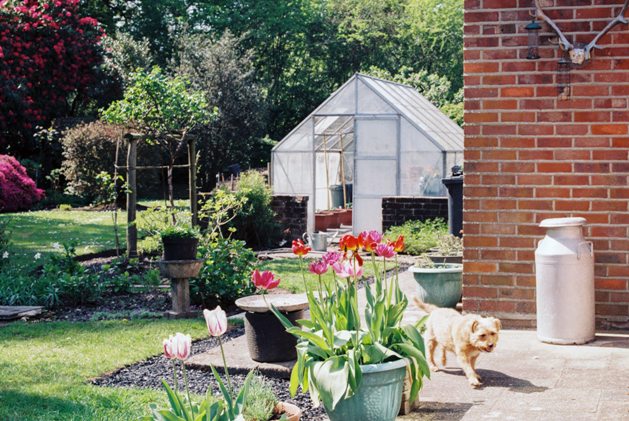
For any gardener who enjoys working with their plants, a greenhouse is a welcome addition to expand their hobby. Greenhouse gardening can be as intensive or as low-key as you want it to be, depending on how much gardening you do and how much money you want to invest in the hobby. Serious gardeners wishing to expand their interest into greenhouse gardening may opt for a permanent structure in their backyard, possibly something that incorporates a cement foundation, integrated doors and windows, and an auto-venting system for temperature control. On the other end of the spectrum, we have the beginning gardener or hobby horticulturist who wishes to cultivate plants indoors during the winter months or start seeds indoors in the spring for a head start on the summer growing season.
Basic greenhouse gardening usually begins indoors with a temporary structure that can be set up when it’s needed and taken down when it’s not. An inexpensive shelving kit will work well for this purpose, provided you have space to set it up. Other structures could be a tabletop that’s not in use or an old workbench. If you are purchasing something new for the purpose of indoor gardening, look for a structure that’s lightweight and that can be easily disassembled for storage. Consider buying plastic, if you have the option, so that you can easily wipe away any dirt or water that accumulates.
Next, you’ll need to look around your home and determine where the shelf or table will be placed. If you have a sunny window that receives at least 6 hours of direct sunlight daily, this is ideal. Warm, sunny bay windows facing the west or south will usually meet the criteria. If you don’t have such a window, then you’ll need to consider using a grow light. This will require a special light bulb that gives off a full spectrum of light similar to the sun’s rays. While the light cast from these bulbs certainly won’t look like natural sunlight to your eyes, to the plants, it is virtually the same. Grow lights can usually be purchased quite inexpensively from home improvement stores, garden centers or online and can then be screwed into your own light fixture at home.
When setting up a grow light, it’s important to suspend the light as close as possible to the plants. Particularly if you are using the light to start seeds, you’ll want to place the light within an inch or two of the seedlings themselves. If you place the light too far away, the seedlings will grow tall and spindly instead of strong and stocky.
An indoor greenhouse can feature a vinyl cover to help retain heat or moisture, or you can simply use the indoor environment of your home as the greenhouse environment. Ideal temperatures will range from 75 to 85 degrees, so choose a room of your house that is warmer than others. If you’re using a grow light instead of a sunny window, you won’t be as limited to the possible locations you can choose from your plants. If you’re using a grow light and trying to determine a warm location in your house, consider an upstairs room and/or a high up location in the room, vertically speaking, such as on top of a high shelf or a tall cabinet. Heat rises, so the highest place in your home should also be the one with the highest temperature.
If you’re a beginning gardener interested in greenhouse gardening, don’t be intimidated to give it a try. Getting started indoors is easy and doesn’t cost a lot of money. With a little time and a minimal investment, you can expand your gardening hobby, grow more plants, and give your green thumb a workout during cooler months!
Ellen Bell works for a retail website that offers many home and garden products.
Related Articles & Free Email Newsletter
Choosing the Best Hydroponic System for Your Greenhouse



Comment here